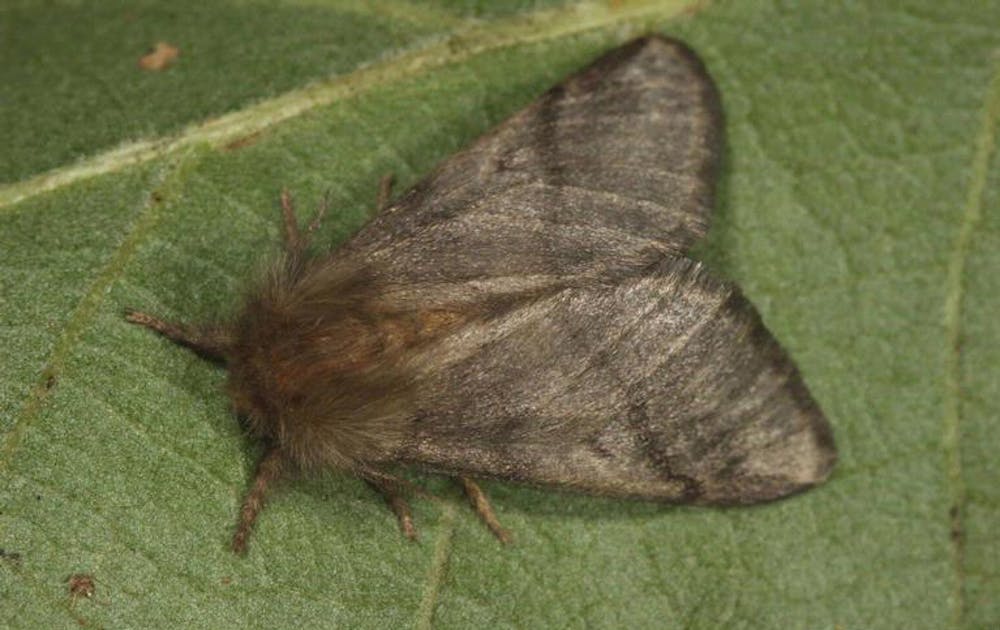Processionary Moth
Oak processionary moth is named for how they move in nose to tail processions. It is native to southern Europe, and is found in almost all European countries. The moths almost exclusively feed on oak trees, and build distinctive white silk nest on trunks and branches (3). Oak processionary moth (OPM) caterpillars are now well advanced in their development and will be at their 5 or 6th (final) instars and will soon be pupating. We are continuing to receive a large amount of public reports of OPM in the core and control zone through Treealert, email and phone calls. The Oak Processionary Moth caterpillar and its nest can cause itchy rashes, eye irritations, and, in severe cases, breathing difficulties in people and pets. Oak processionary moth (Thaumetopoea processionea) is a native of southern Europe. Due to trade in live plants, oak processionary moth has become established as far north as the Netherlands and northern Germany. It was first introduced to Britain in 2005 accidentally.
The oak processionary moth (Thaumetopoea processionea, OPM) has been spreading into the north for years. One of the main reasons is the decline in late frosts, since the moth thrives in warmer temperatures. The oak processionary moth therefore inhabits the warmer regions of Germany, especially Brandenburg, Berlin, North-Rhine Westphalia, Baden-Württemberg and Franconia.
The pests eat the buds and leaves of oaks. The trees are mostly located on the sunny edges of forests, but also in gardens, outdoor pools and sports fields.
Toxins on the hairs
The oak processionary moth itself is harmless. But the caterpillar’s irritating hairs can cause problems. They are barbed and very fine, with a diameter of 0.2 mm. Thaumetopoein, a protein on the surface of the hairs, is particularly hazardous to human heath. Normally, this toxin protects the caterpillar against its natural predators.
The irritating hairs are very brittle and fall off at the slightest touch. Then they either remain in the spun nests of the oak processionary moth or are transported by the wind, sometimes over long distances.
Avoid risk areas

“When hiking in the summer, it is very important to avoid areas where the oak processionary moth is present – well into the autumn”, says ECARF expert Torsten Zuberbier, head of allergy research at Charité in Berlin. The irritating hairs can remain in the nests in trees for years and cause unpleasant symptoms. And beware: Even pets can bring the hairs back into the home.
If you find nests in your own garden, you should call the experts. If the nests are improperly removed – by torching them, for example – the irritating hairs can be dispersed over hundreds of metres.
Rash or allergy
When the skin is exposed to the irritating hairs, the initial reaction is burning and severe itching. Then small red nodules appear, which remain for several days. ”It looks as if the skin has been bitten by many insects”, explains Zuberbier.
Breathing in the hairs can irritate the upper respiratory tract, which can lead to shortness of breath in people with pre-existing conditions. If the hairs are swallowed, the mucous membranes in the throat can swell and become inflamed.
“However, serious skin and respiratory tract allergies can also occur”, warns Zuberbier. Even anaphylactic reactions, including anaphylactic shock, have been known to occur.

What should you do immediately after exposure?
Processionary Caterpillars Usa
“If you enter an affected area by accident, you should get rid of the hairs as quickly as possible – by showering, washing your hair and washing your clothes thoroughly”, says Zuberbier. Otherwise the hairs will get under your clothes and the itching will continue.
In addition, any objects that you were using when you came in contact with the hairs should be carefully cleaned – including the car you drove to the forest – inside and out.
What if you have papules?

If papules have appeared, dermatological treatment is recommended, usually with hydrocortisone cream, which offers fast relief of symptoms. “It is completely safe to use this cream for brief periods of a few days”, says Zuberbier. Side effects only occur if the creams are used in long-term treatments.
What if you have an allergic reaction?
If you have an allergic reaction, including asthma symptoms or pronounced skin problems, you should consult a doctor immediately. You will be prescribed an allergy medicine, such as asthma sprays, antihistamines or cortisone tablets.
Date: 29 July 2020
Sources
Rahlenbeck S and Utikal J.Buses W et al. Eichenprozessionsspinner-Allergie: Raupen mit reizenden Brennhaaren (Oak processionary moth allergy: caterpillars with irritating hairs) Dt. Ärzteblatt 2017; 114 (18): 896-8 (In German)
Julius Kühn Institute, Institute for Plant Protection in Horticulture and Forestry
Last retrieved on: 28 July 2020 (In German)

Processionary Moth Zimbabwe News
Lower Saxony Ministry of Social Affairs, Health and Equality
(April 2014) updated July 2019
Oak Processionary Caterpillar
Last retrieved on: 28 July 2020 (In German)